Those of you who read my last post, Nazi Hunting in Paradise, probably guessed that I am currently on the road. Indeed, I am traveling for Opapa research this summer. After a year and a half researching and writing about my grandfather’s life, this felt like the right time to visit some of the places that were important to him, reconnect with our family in Budapest, and track down some obscure documents in archives in Austria, Hungary, and Slovenia.
I started my trip in Salzburg and the Austrian lake district, where Opapa hunted Nazis in the summer of 1945, just after the war. Then I took the train to Vienna, where I met up with my parents and my sister Emily. The next day, we traveled to Budapest, where we met my sister Erzsi. For the first time in years, it was just the five of us — my parents and my sisters — traveling together. That in itself has been very meaningful. We spent the last week in Budapest, seeing family, finding places that my grandparents talked about, and discovering many new details about our family’s past.
I thought I would post regularly as I traveled, but that hasn’t been possible — there has been too much to do, and see, and visit. This trip has been overwhelming in the best way: reconnecting with family members, meeting cousins I had never met before, and finding new information about my family’s history has been emotional and all-consuming. So I will be processing this trip over the next several weeks, and posting about different moments of discovery.
For now, I will describe one especially meaningful moment: finding the memorial to my great grandfather, Árpád Gerbner, in the Kozma Street cemetery, one of the Jewish cemeteries in Budapest. I wrote about this memorial once before, but I had never seen it in person. Last Thursday, the five of us drove out to Kozma to try to find it. We also wanted to visit the graves of our other relatives — it turns out that many Gerbners were buried here.
It was more difficult than I had anticipated: the Kozma cemetery is very overgrown, particularly in the older areas. We didn’t know where Árpád’s memorial was, so we decided to start by finding the graves of Mátyás Gerbner and his wife Roza Feuerstein, Árpád’s parents and my great-great grandparents. We knew the exact plot number, so I figured it would be easy: section 16, row, 5, plot 1.
Alas, most of the graves were consumed in vines, and some were inaccessible — it was more like a jungle than a cemetery. Making matters worse, the plot numbers didn’t seem to line up exactly, and some of the engravings on the stones were no longer legible.
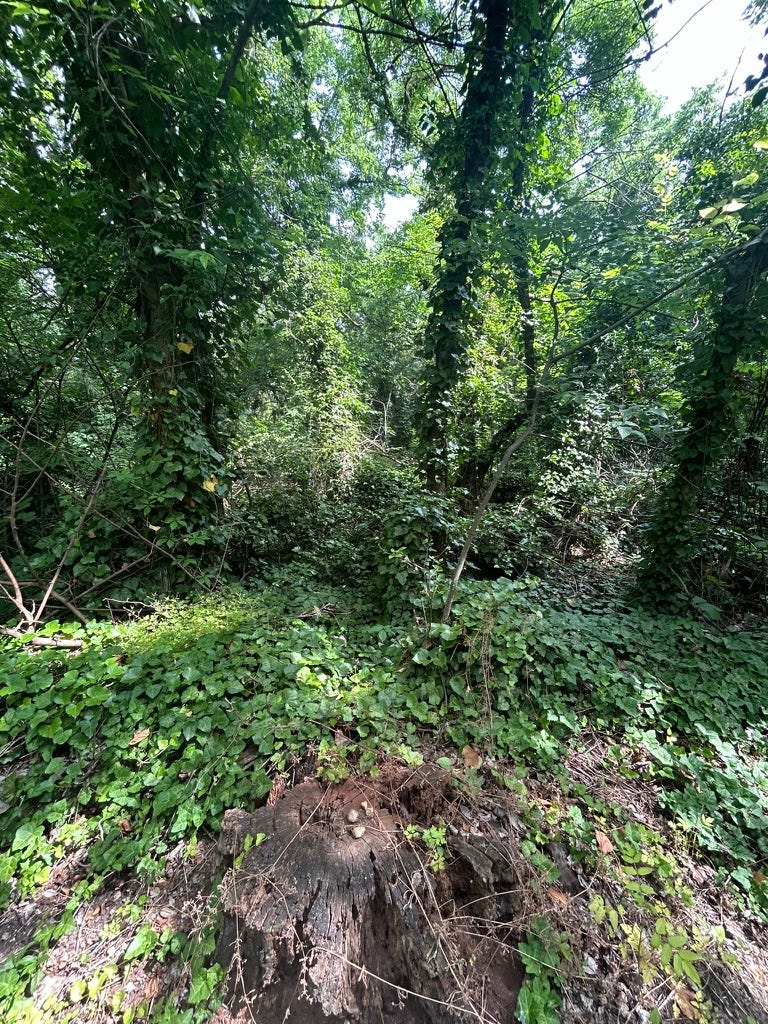
After about half an hour of searching, I started to despair. But then, as I pulled back vines from one of the graves, I saw his name: Gerbner Árpád.
We don’t know where Árpád was killed, but here was the memorial I was looking for, with the following inscription: “His memorial tomb is in the cemetery, the place of his burying is unknown.”
As my parents, sisters and I cleared the vines from Árpád’s memorial urn, we were in for another surprise: the names of my great-great grandparents, Mátyás Gerbner and Roza Feuerstein, were engraved on the back side of the urn. It all made sense now: this was originally their burial place. When Árpád died in the Holocaust at an unknown location, someone in the family — I don’t know who — memorialized him here.
I wondered whether my grandfather had come here to pay his respects to his father and grandfather. I know he was here as a toddler, when his grandfather Mátyás died in 1921. Several months ago, I found the newspaper announcement of Mátyás Gerbner’s death in the Magyarorszag newspaper in 1921, and it lists my grandfather, “Gerbner György,” along with his father Árpád and the rest of the Gerbner siblings.

I tried to imagine what this place looked like 103 years ago, when Mátyás was buried — no weeds, no wines overtaking the gravestones. Apparently, it used to be a “majestic, green architectural and historical landmark that served as the final resting place of many national figures who helped to make Hungary what it is today.”
The disrepair is another legacy of the Holocaust. We have now visited three Jewish cemeteries during our trip, many of which are placed on the edge of the cemeteries for Christians. While the Christian cemeteries are generally in good shape, and have frequent visitors, the Jewish cemeteries — particularly those with graves from before the 1940s — are often completely overgrown. There just aren’t enough descendants still living in Hungary to take care of them.
So we did our small part, and cleared a few other grave sites before getting back in our car. It doesn’t change the past, but it felt good to at least remove the vines from the Gerbner memorial, and to pay our respects.
***
Nuts to crack:
Who paid to engrave Árpád Gerbner’s name onto the memorial? Perhaps his widow Margit, or his siblings?

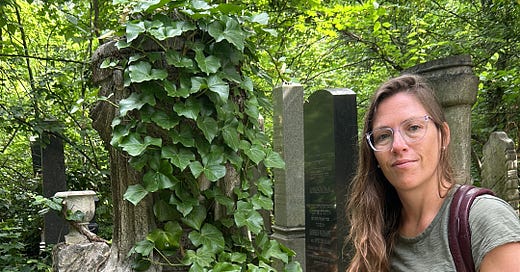



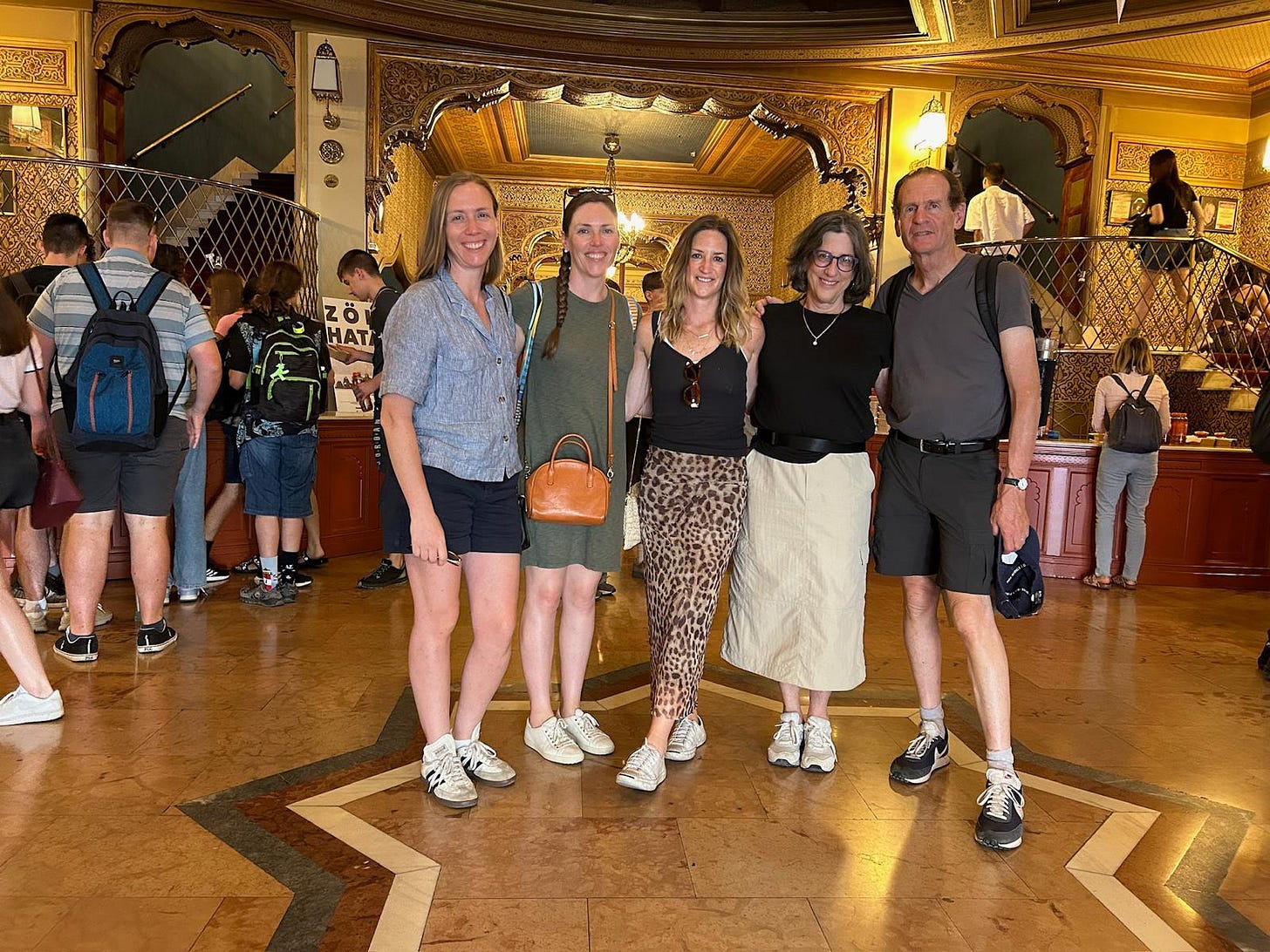

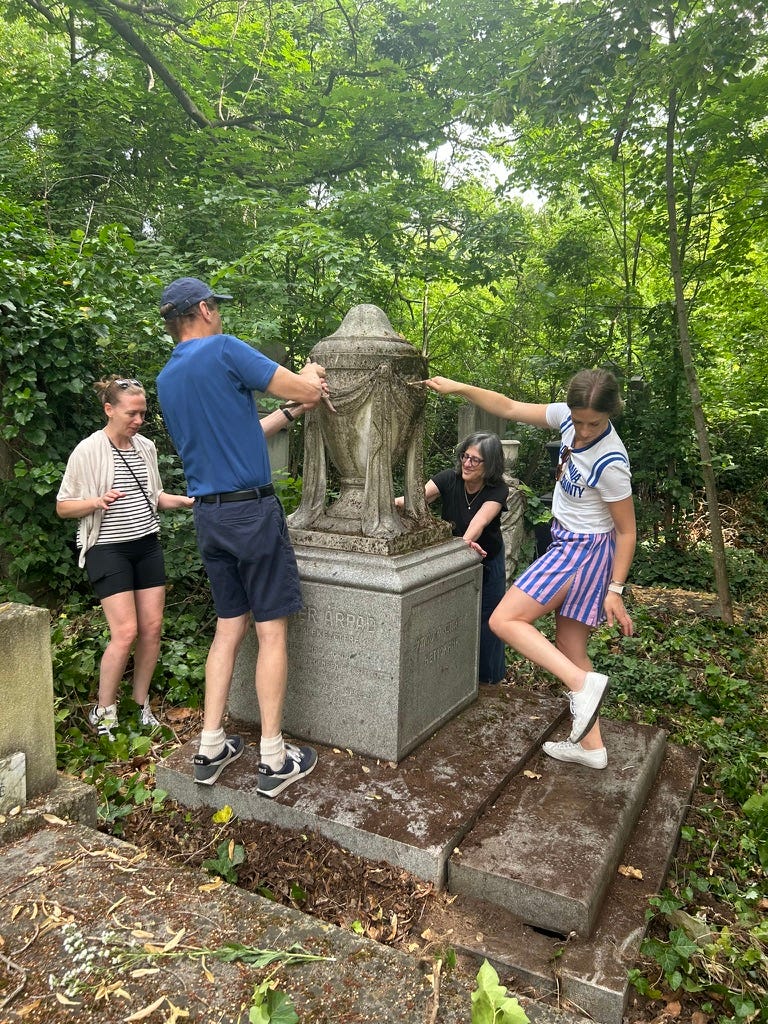

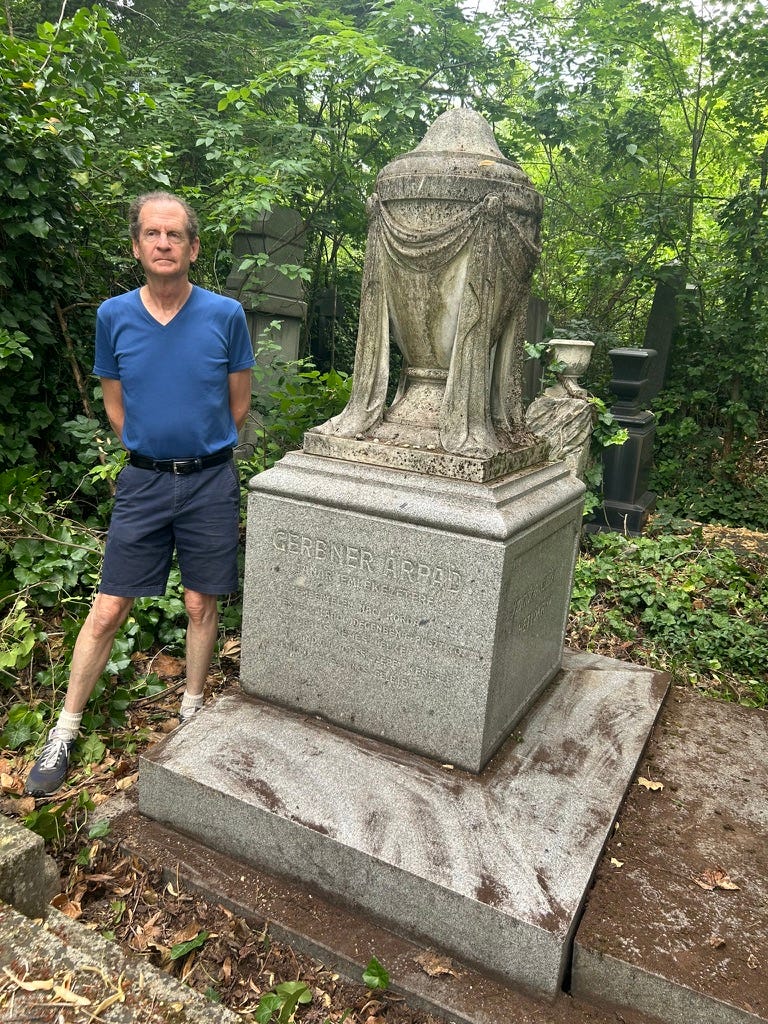
Love this so much! As Erz said, you captured the experience beautifully. I note that Arpad doesn’t have any Hebrew on part of the memorial. I wonder if that was his wish or Margit’s decision.
You captured the unexpected cemetery jungle adventure beautifully. No mosquitos, ticks, or overgrown ivy could stop this intrepid historian or her sidekicks!
Can’t wait for more of your recap posts. What an incredible experience we got to be a part of. You’re amazing, prof KT!